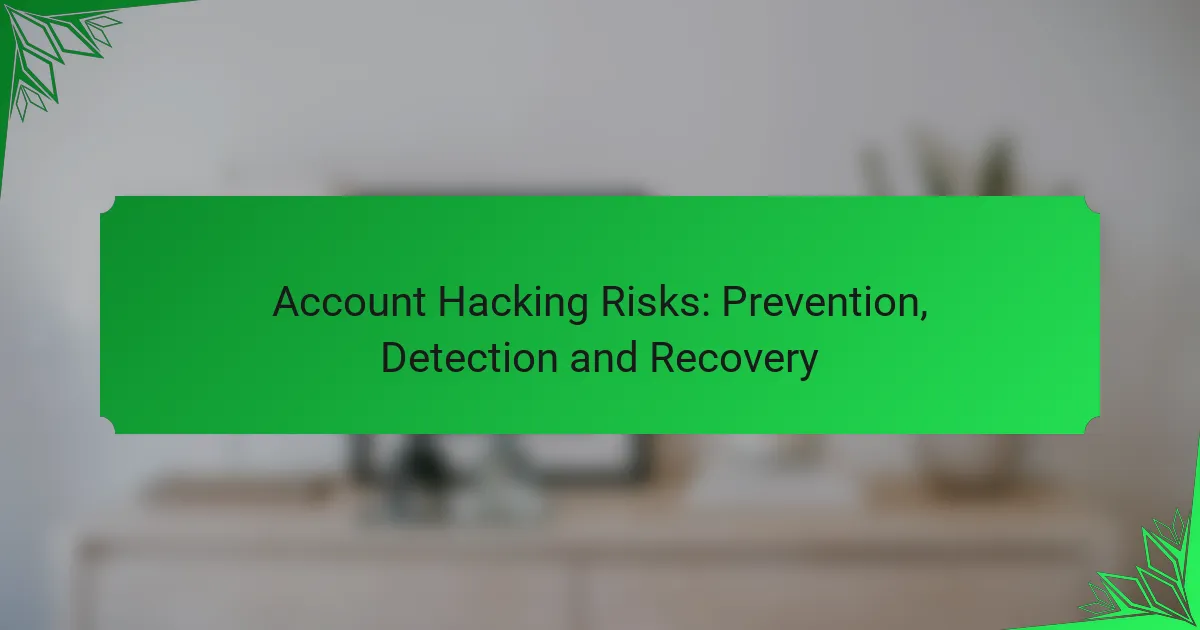Account hacking poses significant risks, including data theft, identity fraud, and financial loss, which can severely impact both individuals and organizations. To combat these threats, it is essential to adopt proactive prevention strategies, enhance user awareness, and implement robust security measures. Additionally, effective detection methods can help identify unusual activities early, allowing for timely intervention and damage mitigation.
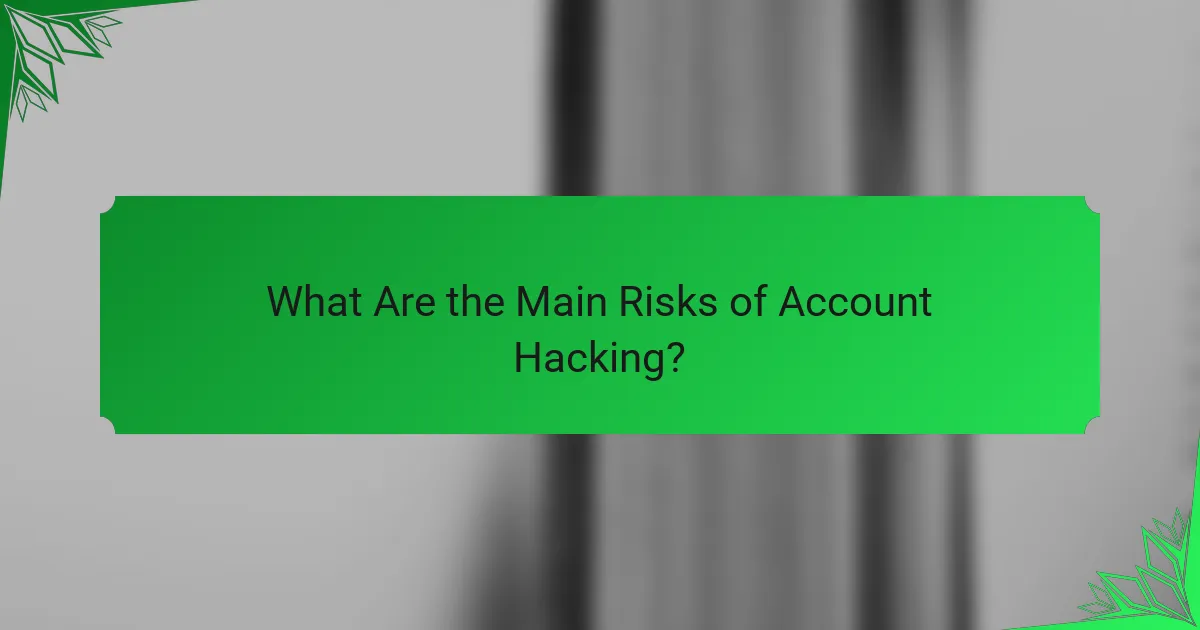
What Are the Main Risks of Account Hacking?
The main risks of account hacking include data theft, identity fraud, financial loss, reputation damage, and unauthorized access. Each of these risks can have serious implications for individuals and organizations, making it crucial to understand and mitigate them effectively.
Data theft
Data theft occurs when hackers gain unauthorized access to sensitive information, such as personal details, passwords, or confidential documents. This stolen data can be sold on the dark web or used for malicious purposes, leading to severe consequences for victims.
To prevent data theft, use strong, unique passwords and enable two-factor authentication (2FA) wherever possible. Regularly monitor your accounts for unusual activity and be cautious of phishing attempts that seek to steal your credentials.
Identity fraud
Identity fraud happens when someone uses stolen personal information to impersonate another individual, often to commit financial crimes. Victims may find their credit scores damaged or face legal issues due to actions taken in their name.
To protect against identity fraud, regularly check your credit reports and consider placing a fraud alert on your accounts if you suspect a breach. Be vigilant about sharing personal information and educate yourself on the signs of identity theft.
Financial loss
Financial loss from account hacking can occur through unauthorized transactions, drained bank accounts, or fraudulent purchases. This can lead to significant monetary damage, especially if the breach goes unnoticed for an extended period.
To minimize financial loss, set up transaction alerts with your bank and review your statements frequently. Use secure payment methods and avoid storing sensitive financial information on untrusted sites.
Reputation damage
Reputation damage can result from account hacking, particularly for businesses. A breach can lead to loss of customer trust, negative media coverage, and potential legal repercussions, affecting long-term success.
To safeguard your reputation, implement robust security measures and have a response plan in place for breaches. Transparency with customers about security practices can also help maintain trust.
Unauthorized access
Unauthorized access refers to when hackers gain entry to accounts without permission, allowing them to manipulate data or perform actions on behalf of the account holder. This can lead to various issues, including data loss and operational disruptions.
To prevent unauthorized access, regularly update passwords and use security questions that are difficult to guess. Educate yourself and your team on recognizing suspicious activities and the importance of cybersecurity practices.
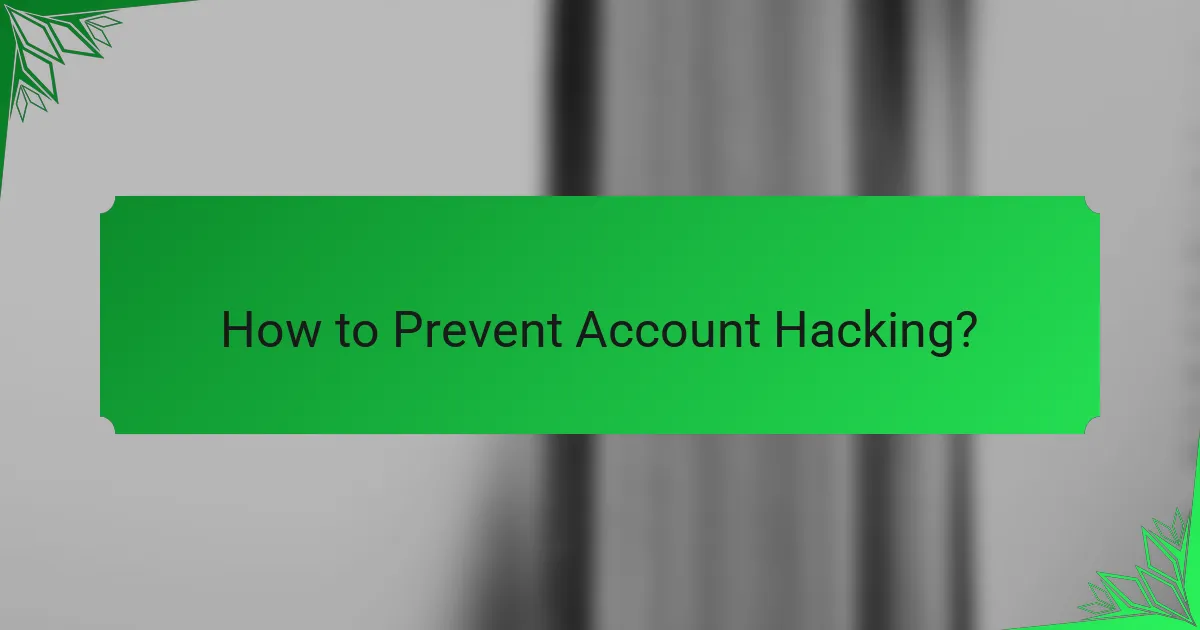
How to Prevent Account Hacking?
Preventing account hacking requires a proactive approach that includes strong security measures and user awareness. By implementing effective strategies, individuals and organizations can significantly reduce the risk of unauthorized access to their accounts.
Use strong passwords
Strong passwords are essential for safeguarding accounts against hacking attempts. A strong password typically includes a mix of upper and lower case letters, numbers, and special characters, and should be at least 12 characters long.
Avoid using easily guessable information like birthdays or common words. Consider using a password manager to generate and store complex passwords securely, making it easier to maintain unique passwords for different accounts.
Enable two-factor authentication
Two-factor authentication (2FA) adds an extra layer of security by requiring a second form of verification in addition to your password. This could be a code sent to your mobile device or an authentication app.
Enabling 2FA can significantly reduce the likelihood of unauthorized access, even if your password is compromised. Most major online services offer 2FA options, so check your account settings to activate this feature.
Regularly update software
Keeping your software up to date is crucial for protecting against vulnerabilities that hackers can exploit. This includes operating systems, applications, and antivirus software.
Set your devices to automatically install updates when available, or regularly check for updates manually. This practice helps ensure that you benefit from the latest security patches and enhancements.
Educate users on phishing
Phishing attacks trick users into revealing sensitive information by masquerading as trustworthy sources. Educating users about recognizing phishing attempts is vital for preventing account hacking.
Train users to be cautious of unsolicited emails or messages that request personal information or direct them to unfamiliar websites. Encourage them to verify the sender’s identity and to report suspicious communications to your IT department or security team.
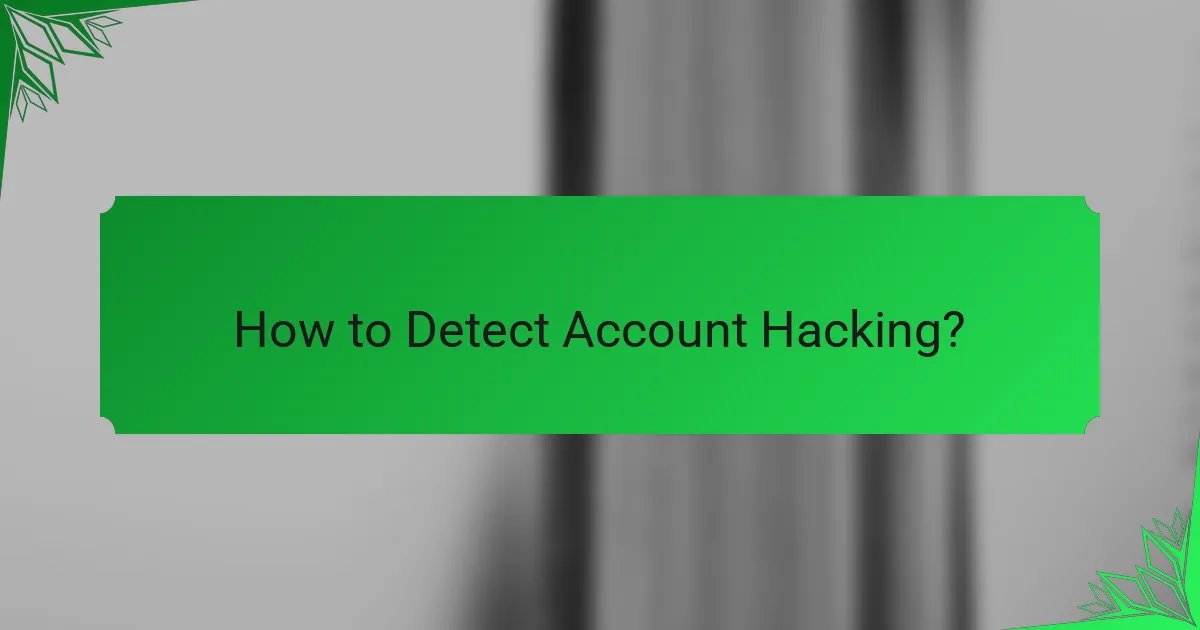
How to Detect Account Hacking?
Detecting account hacking involves monitoring for unusual activities and setting up protective measures. Early detection can prevent further unauthorized access and minimize potential damage.
Monitor account activity
Regularly reviewing your account activity is crucial for spotting signs of hacking. Look for unfamiliar transactions, changes in personal information, or logins from unknown devices or locations.
Most platforms provide an activity log that details recent actions. Check this log frequently, ideally weekly, to ensure everything aligns with your own usage patterns.
Set up alerts for suspicious logins
Enabling alerts for suspicious logins can help you respond quickly to potential breaches. Many services allow you to receive notifications via email or SMS when a login occurs from an unrecognized device or location.
Consider setting alerts for logins from different geographical areas or devices that you do not typically use. This proactive step can alert you to unauthorized access attempts almost immediately.
Use security software
Implementing security software can enhance your ability to detect hacking attempts. Antivirus programs and firewalls can monitor for unusual activities and block potential threats before they compromise your account.
Choose reputable security software that offers real-time protection and regular updates. Look for features like phishing protection and identity theft monitoring to further safeguard your accounts.
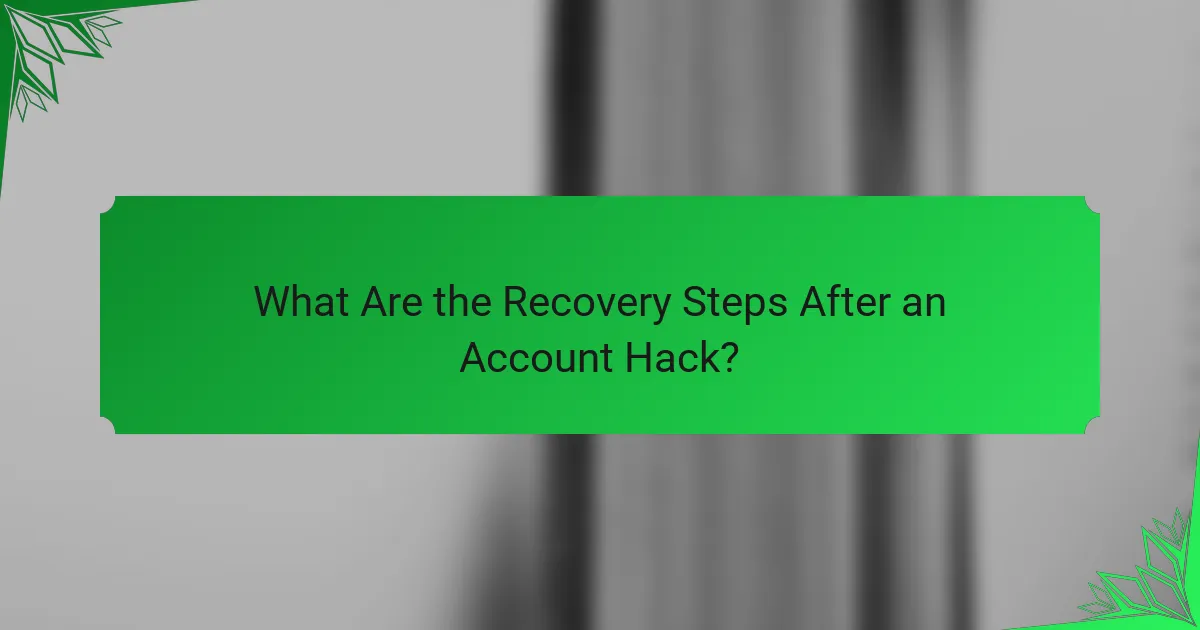
What Are the Recovery Steps After an Account Hack?
After an account hack, the first priority is to secure your account and prevent further unauthorized access. This involves a series of critical steps that include changing passwords, notifying affected parties, reviewing account settings, and considering identity theft protection.
Change passwords immediately
Changing passwords is the first and most crucial step after discovering an account hack. Use a strong, unique password that combines letters, numbers, and symbols, and avoid reusing passwords across different accounts. Consider using a password manager to generate and store complex passwords securely.
Ensure that you enable two-factor authentication (2FA) wherever possible, as this adds an additional layer of security. This can significantly reduce the risk of future unauthorized access.
Notify affected parties
Inform anyone who may be affected by the breach, including friends, family, or colleagues, especially if sensitive information was compromised. This is particularly important for shared accounts or if personal data was exposed.
Additionally, notify your bank or financial institutions if financial information was involved. They can monitor for suspicious activity and take necessary precautions to protect your accounts.
Review account settings
After changing your password, review your account settings for any unauthorized changes. Check for unfamiliar linked accounts, changes in recovery options, or any suspicious activity logs.
Make sure your recovery email and phone number are accurate and secure. This ensures that you can regain access to your account if it is compromised again in the future.
Consider identity theft protection
Identity theft protection services can help monitor your personal information and alert you to potential misuse. These services often include credit monitoring, identity theft insurance, and assistance with recovery if your identity is stolen.
Evaluate different providers based on their features and costs, as prices can vary widely. Investing in such a service can provide peace of mind, especially if sensitive information was compromised during the hack.
